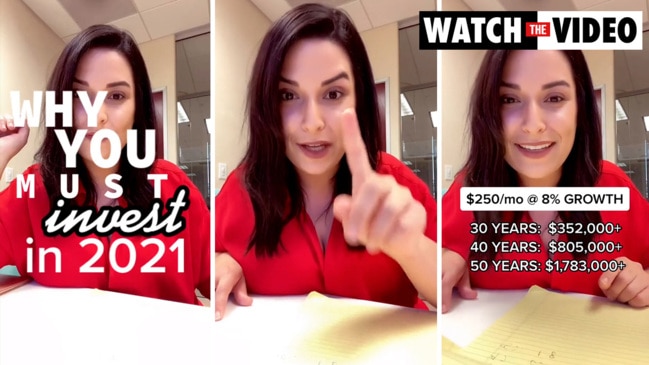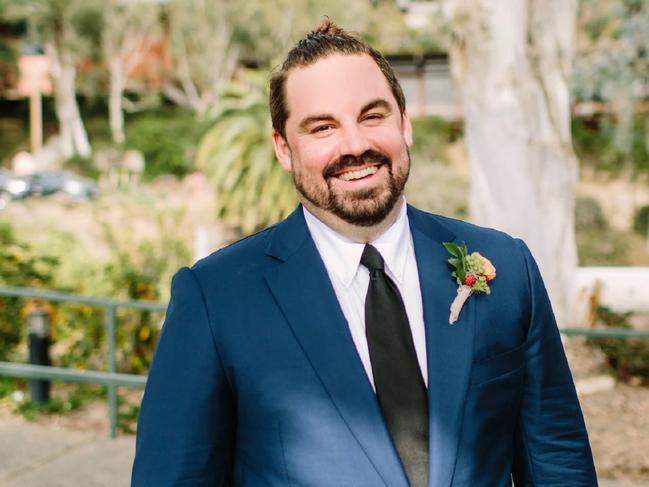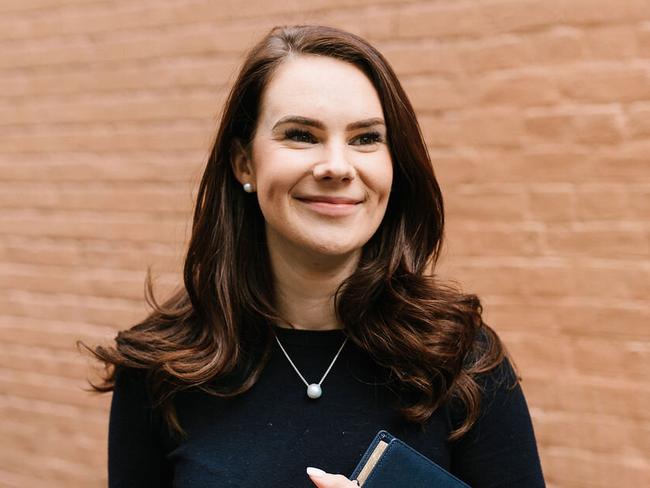Self-made millionaire’s no-fail tip for spending and saving
Turns out that when it comes to saving money, buying coffee and avocado toast might not be a problem after all if you can answer these questions first.

Business
Don't miss out on the headlines from Business. Followed categories will be added to My News.
You’ve probably heard this common financial tip before – if you want to save money, stop buying coffee and make it at home instead.
It’s one of the most annoying bits of advice out there and turns out it could be wrong, too.
According to 36-year-old self-made millionaire Grant Sabatier, buying yourself coffee every day – or anything else you want for that matter – could be a wise financial decision and “sometimes convenience is worth it”.
There’s just one catch – it all depends on what the true cost of the item is.
Using a method called The True Cost of Anything, which was the subject of a popular blog post by Mr Sebatier and a full chapter in his international bestseller Financial Freedom, you can work out just how wise a financial decision it is to buy anything from a coffee, to lunch, to property.
“The True Cost of Anything is a simple method to figure out how much something actually costs by figuring out how much money you’d need to make before taxes to buy it, how many hours of your life you traded for it, how much the money would be worth if you invested it instead, and how much it would cost for you to do or create the same thing yourself,” he explains.
“Being mindful about the true cost of something makes it easier to decide whether or not buying it is actually worth it to you. It presents a much fuller picture of the true cost than the price.”
How to calculate the true cost of anything
To determine exactly how much it cost you to buy that $4 cup of coffee using Mr Sebatier’s formula you need to ask yourself the following four questions.
Before Tax Income Price: How much money do you have to make before tax to buy the $4 cup of coffee?
Life/Time Price: How much of your life will you trade for that $4 cup of coffee?
Price of Convenience: How much would it cost you to make the coffee yourself?
Annual Cost: How much does the coffee cost you if you buy it every day?
The Future Value of Money: How much would the $4 you spent on coffee be worth invested in five, 10, 20, 30+ years? How much would the money you are spending on coffee every day be worth in the future?
Why you should buy the coffee is you want it
“We often spend money so carelessly because something is ‘only $3’ but in reality, everything is actually more expensive,” adds Mr Sebatier.
“One of the reasons is that time is more valuable than money, so whenever we’re buying something we’re trading both the hours that it took us to make that money AND the future opportunity cost of how much that money could be worth if we invested in for the future instead.

“Whenever we spend money there’s always a trade-off and I wanted to find a method to calculate that trade-off to help me make decisions. The true cost of anything is that method.”
But says Mr Sabatier, who is also the co-founder of BankBonus.com, you can – and should – still buy the coffee if you want it.
“People misunderstand money and focus on the small things, missing the big picture. You should spend money on the small things that bring you joy and cut back on the big things where you can actually save the most money,” he says.
“If a cup of coffee makes you happy and you know its true cost then you should buy it. That coffee purchases really don’t add up to much and cutting them back just reinforces a scarcity mindset.”
It’s a sentiment that Aussie financial adviser Victoria Devine, creator of She’s on the Money, agrees with.
“Coffee is one of those daily indulgences that we’re definitely paying too much for, but for many it’s a joyous ritual that helps us get up in the morning, so I understand the resistance to ditching the morning brew,” she says.
“With that in mind I’d say if you’re really trying to save and cut down on your non-essential spending, then ditch the coffees or maybe treat yourself twice a week instead of every day so the coffee tastes even better and you’re having a lesser impact on your bank account.
“BUT if it’s the one treat you allow yourself and you’re disciplined in taking your lunch to work or not leaning on Uber Eats when you’re too knackered to cook, then enjoy those lattes friend.”

How to use the true cost of anything formula
If you’re keen to put the True Cost formula to the test, but it seems a bit long for small purchases, you could hone in on one thing that represents the most value to you.
For Mr Sebatier, it’s the Life/Time price that had the biggest impact on his life.
“We’re always told that time is money, but it’s not. Time is much more valuable than money because you can’t get it back or make more of it,” he says.
“Whenever you buy something it’s costing you hours of your life that you’ll never get back. Once I learned this I valued my money a lot more and was much more careful with where I spent the hours of my life.”
And, he says, there are times when convenience does trump saving.
“Convenience is often a high premium but worth it if the time you’re saving is worth more than the cost of convenience.”
Mr Sebatier says knowing how much your time is worth is key to knowing if what you’re saving is worth it. Using an example of someone who spends an average of three hours meal prepping breakfast, lunches and snacks for the week ahead, he says “Figure out how much that three hours of your life is worth and the cost of your lunch ingredients and the time it takes to buy them at the store then add it up.
“That’s your true cost for making your lunch, which is often a lot more expensive than buying a $15 lunch around the corner from your office every day at $75 a week,” he explains adding, “This is why the world’s most successful people don’t prep their own lunches at home. Their time is so much more valuable and they know this.”
How to spend your money
For Mr Sebatier, the second-worst offender to coffee when it comes to spending is housing.
“Most people spend too much on housing – it’s where 50 per cent or more of most people’s income goes,” he says.
“If you can reduce your housing expense, even for the next three to five years, and invest that money, that one decision can set you up for life.”
While Ms Devine believes it’s the seemingly innocuous purchases and the spending creep that follows which really sabotages our ability to save.
“Consider this; we buy a $5 oat latte every day, plus we have a $50 per week gym membership, and we tend to spend $100 on brunches and dinners on the weekend, plus we treat ourselves to about $100 per week on non-essential items like clothing and Kmart homewares. That’s $255 per week, or $13,260 a year!” she explains.
“If we saved that money instead of spending it, within five years we’d have $66,300 – a house deposit! We just need to think long-term and consider how these seemingly harmless daily spends can impact us down the line.”
So, you’re sold on making your own coffee, cooking at home and wearing the clothes you’ve already got, where’s the best place to put all of those savings?
“We don’t just need to have that money sitting stagnantly in a bank account that isn’t doing anything for us,” advises Ms Devine.
“Instead of just pocketing the $5 you save each day on not buying coffee, put it into a micro-investing account and make your money work for you.”
How to make barista quality coffee at home
Can’t imagine coping without your barista-made coffee? Lavazza’s National Training Manager, John Kozsik, shares easy ways to perfect your morning brew.
1. It’s all in the packaging.
There are simple ways to identify quality coffee and a good place to start is with packaging. Good quality packaging ensures your coffee beans or ground coffee will stay fresh for longer.
Look for a non-transparent foil packet with a one-way breathing valve. Once open, to retain freshness of the remaining coffee, expel any air by tightly rolling up the bag, secure with a band or clip, and store in a dry and cool place, without refrigerating.
2. Get your espresso right by dosage.
Whether you drink double espressos or milk-based coffees, it’s safe to say that the espresso is the foundation of any coffee, and if that’s ruined, the chances of your coffee tasting good are slim to none.
Firstly, good quality coffee is non-negotiable. I’ve been using Lavazza’s ¡Tierra! coffee beans.
The overarching goal when it comes to at-home espresso machines is to aim for extraction of about 25 to 30ml of coffee in around 25 to 30 seconds. If your pour is over, or under, it will often mean your coffee grind is too coarse, or too fine, which often can be fixed by adjusting your settings. Of course, if you’re using a good capsule coffee machine, this step should be adjusted for best use.
3. Adjust temperature to perfect milk.
For full-cream milk lovers, make sure your temperature is around 65°C during the frothing process. For those who drink almond, soy or oat milk, make sure you adjust to 55°C or it will run the risk of burning.
RELATED: Worried dad’s move saves $500 on energy bills
RELATED: Dentist’s warning about cheap DIY braces
RELATED: Simple household change can save $200
Originally published as Self-made millionaire’s no-fail tip for spending and saving


